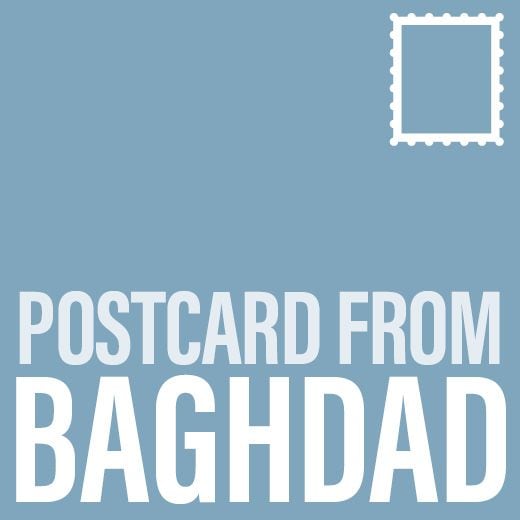
Although its elegant past is now a distant memory, the spirit of a bygone age endures in Baghdad’s old neighbourhood of Al Bataween.
Developed in the first half of the last century, Al Bataween emerged as an upscale neighbourhood that was once a symbol of the diversity of Iraqi society, where Muslims, Christians and Jews all lived together.
However, the district’s fortune began to wane in early 1940s.
With the rise of a pro-German government in Iraq, the influence of the Nazis expanded, threatening the Jews. Their campaign – part of Germany's wider war to break Britain's control of the oil-rich Middle East for its own war effort – paved the way for the notorious Farhud.
The 1941 pogrom against the country’s Jewish community saw hundreds of Baghdad's Jews murdered, their properties either looted or destroyed, marking the start of their emigration from the country.
During the 30 years that followed, the number of Jewish families decreased significantly due to harassment. With the outbreak of the Iraq-Iran war in 1980, a large percentage of the Arab community, particularly Sudanese and Egyptians, moved there, and many still live there. By then, Al Bataween became a commercial area where different businesses started to pop up, particularly printing houses.

In early 1990s, the UN sanctions on Iraq that followed the invasion of Kuwait led to a mass exodus of its original inhabitants, mainly the Christians. More left the neighbourhood, in the heart of Baghdad, after the 2003 US-led invasion that toppled Saddam Hussein’s regime and unleashed bloody sectarian warfare and insurgency.
Elegant wooden balconies, known as shanashil, once symbols of affluence and architectural beauty, now stand in disrepair, overshadowed by a growing underworld of crime, alcoholism and prostitution.
The neighbourhood still houses an old Jewish cemetery and a single synagogue where a handful of Jews observed their religious events until 2003.
Al Bataween has recently grabbed headlines with security authorities cracking down on criminals and drug dealers. That has paved the way for the government to reconsider long-awaited plans to renovate some of the dilapidated Jewish houses and restore some of Baghdad’s fading heritage.
Hundreds of suspects and illegal migrants have been arrested and large quantities of drugs and weapons have been seized, according to the Interior Ministry. Security forces now stand guard at the main exits, entrances and alleys, shutting down brothels and illegal liquor stores.
The security operation, which began in late April, has allowed Baghdad Municipality to enter the area for the first time in years, clean it and “turn it a vibrant area to eliminate organised crime,” said municipality spokesman Mohammed Al Rubaie.

Like other Jewish community properties, its houses have been considered frozen assets since the 1950s that cannot be used as family homes after restoration, Mr Al Rubaie told The National.
“However, several buildings can be restored as heritage houses to be used for cultural and business activities,” he said.
Due to the absence of allocated funds from central government, Baghdad Municipality is planning to strike a deal with the private sector to undertake the restoration, he added.
It is planning to copy an initiative financed by the Central Bank of Iraq and the Iraqi Private Banks League that restored Al Mutanabbi Street in Old Baghdad, he said.
Although more than 2,400 houses are registered as heritage sites in Al Bataween, only a few of them can be renovated, he added.
They are divided into three categories: “A”, which has a unique design that cannot be modified, “B”, that can be only modified from inside but not on the facade, and “C”, which can be demolished and rebuilt again.
“[Al Bataween] specifically represents the fabric of the Iraqi society for 100 years from 1924 to 2024 which was a mix of Christians, Jews, Muslims and other religions,” Mr Al Rubaie said.
“The architect is distinguished and therefore the architectural identity of Baghdad is represented in these buildings.”
Most of the houses comprise two floors and are built in the traditional Baghdad style, known as the Eastern House, where an open courtyard is in the centre, allowing a view of the sky, surrounded by numerous rooms, and a staircase leading to the upper floor, which has a design similar to the ground floor.
The courtyard is paved with yellow bricks, while floors inside are made of mosaic tiles with various patterns and decorations.
The homes also have staircases leading to the basement, which was used as a sleeping place during the hot summers. Families would place a layer of prickly chaff or fresh green thorns on palm fronds and fix to the windows. If they dried out, they would sprinkle them with water to provide the basement inhabitants with cool air.
Additionally, beautifully decorated columns supported the house, adding a touch of elegance and splendour to the structure.

The 95-year-old Iraqi Jewish musician and poet Ezekiel Salih reflected on a Baghdad that once thrived with diversity and harmony.
With vivid memories, Mr Salih recounted a time in the first half of the last century when Jews, Muslims and Christians lived side by side in peaceful coexistence.
“There was peace, no hatred, each one respected the other’s religion,” he recalled. “We lived with Arabs like brothers, we used to hang out together, to eat together and to visit each other."
But all that changed in 1940s – especially when the state of Israel was established – he told The National from his home in Jerusalem, where his family settled in 1951.
However, he still has good memories of Arab families who protected and sheltered his family during the Farhud, as well as Al Bataween where he used to visit his uncle's house every Saturday.
“Most of its residents were Iraqi merchants, and the area was very quiet with orchards nearby,” he said.
Despite spending more than 70 years away from Iraq, the father of five says that “anyone who drinks the water of Iraq can never forget Iraq”.